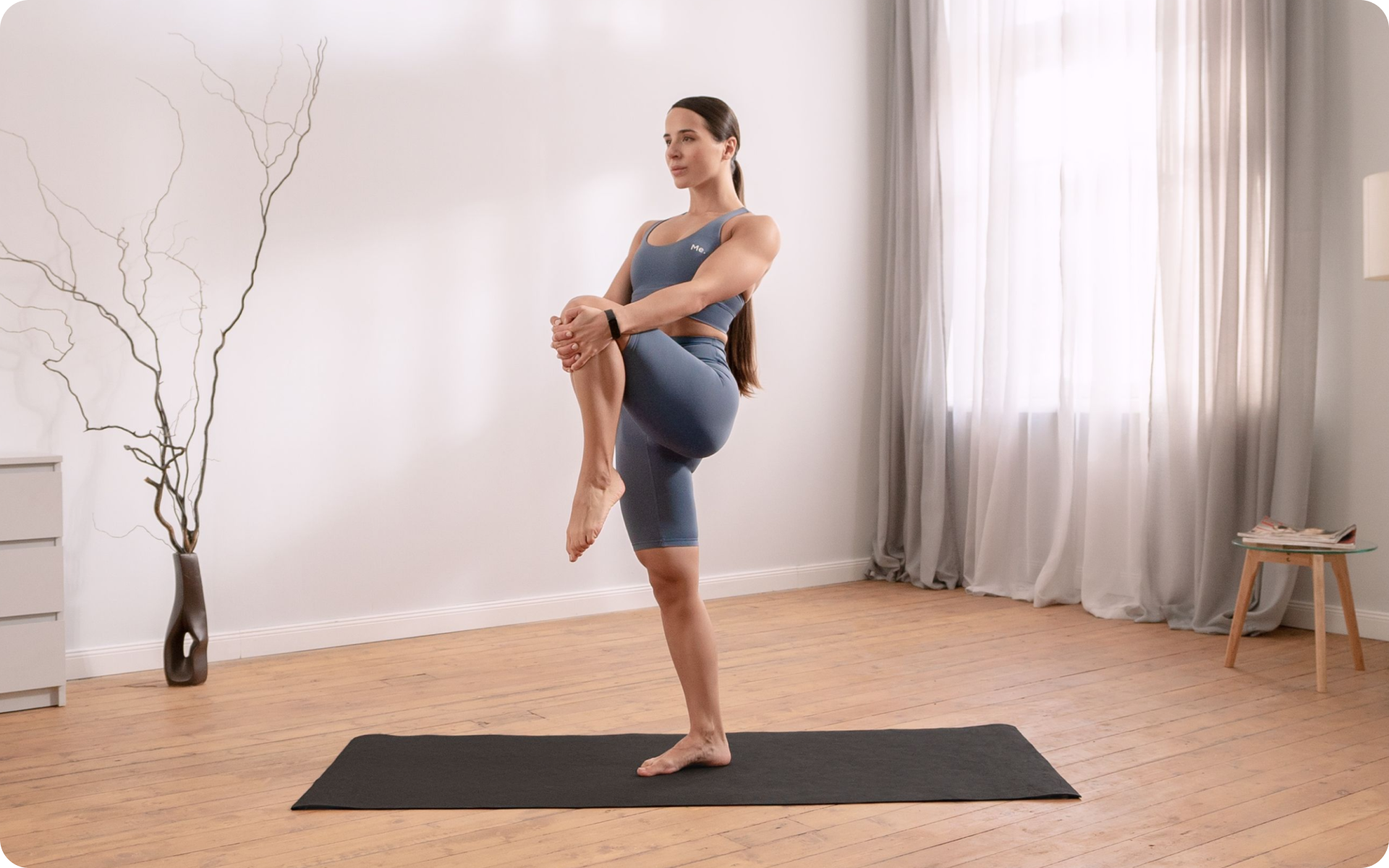The topic of running has been a controversial one for many years. Some say it is the best thing you can do for your health and others say it will kill you. The truth, as with most things, lies somewhere in between these two extremes. Running does have some very definite benefits, but some drawbacks need to be considered before deciding if this is something worth doing or not. Let’s take a look at both sides of the equation and see what we come up with.
What Running 6 Miles A Day Can Do For You?
There are several benefits of running six miles a day, including:
Weight Loss
When it comes to losing weight, nothing gets results as exercise does. And when you use the right activities (such as running) in your program, there is no end to how much weight you can lose or how quickly you can do it.
People have reported losing more than several pounds over several months through running alone. This is not an unrealistic goal by any means and something that almost anyone who really wants to lose weight can accomplish with enough effort and dedication on their part.
Running helps you lose weight by burning calories. To lose weight, you need to burn more calories than you take in daily. Running can definitely help with that.
It causes your body to burn off far more calories per hour than many other activities would, making it the best fat-burning activity of all when it comes to working out to lose weight (3).
If you’re wondering, “how much weight can I lose running six miles a day?”, the answer is that it all depends on your size, how fast you run, and how many calories you burn running.
One of the best things about running is that it can be adjusted to suit almost anyone’s needs. If you are heavier than you would like to be, increasing the distance or pace will help you get faster results.
Reducing Your Appetite
Another way running helps with weight loss is by reducing the amount of food you feel like eating while you are doing it. Instead of feeling hungry after a run, most people feel satisfied and eat much less during their normal meals, as well as the rest of the day, due to this effect running has on appetite reduction (5).
Read More: Run 5 Miles A Day: Debunking The Myths About Running 5 Miles And Setting The Record Straight!
Building Muscle Mass
While cardio or aerobic exercises, such as running, aren’t the best things for building muscle mass (weight lifting is), they can still help with this in some ways when done at a high enough intensity (7).
Running six miles a day will not build you big bulky muscles as weightlifting would, but it can contribute to muscle toning and firming and getting rid of excess fat and cellulite. This can firm and tighten your body over time, giving you a more attractive appearance even if you don’t lose much weight from it (7).
Improving Your Heart Health
As many people already know, the heart is one of the most important organs in our bodies. It pumps blood through our system that provides us with oxygen and nutrients to live. If our heart is unhealthy, we will feel very tired and worn out faster than normal.
Fortunately, running has been shown to improve the cardiovascular system through a process known as aerobic exercise. Aerobic exercise increases your body’s overall oxygen intake, improving the function of every part of your body that depends on being able to access this outside of your lungs. This includes organs such as your heart, which becomes stronger and more efficient at pumping blood through your entire cardiovascular system over time if you run regularly (1).
Decreased Risk Of Disease-Related Death
Running doesn’t just help with cardiorespiratory functions either, it has also been shown to reduce inflammation in the body, which is associated with disease-related deaths (including cancer). Those who run regularly also tend to be at a much lower risk of developing many types of diseases than those who don’t (8).
Not only that, but they will tend to live longer on average than people who don’t run or exercise as well if they do.
All these benefits are great so far, but now let’s take a look at some of the drawbacks of running six miles per day.
If you struggle to even flirt with the idea of giving up your favorite foods or working out till your legs give way – BetterMe app is here to breathe a fresh perspective into the way you view the weight loss process! Check out the app and experience the fun side of fitness and dieting with BetterMe!
What Running 6 Miles A Day Can Do Against You?
There are several problems that you might encounter by running too much in your daily workout routine, such as:
Muscle Soreness And Injury Risk
One major problem is muscle soreness and injury related to high-impact activity like running too frequently for an extended period. This can be extremely bad if you are running six miles a day for several months, as you may experience muscle soreness that is far worse than usual due to the impact your body absorbs every single step you take while running.
Dehydration Risk
Another problem with running too much is dehydration. Dehydration happens when your body doesn’t have enough water in it for various bodily processes to function correctly.
If you aren’t taking in enough fluids during and after a run like many runners, this can lead to problems such as fatigue which can prevent you from achieving results as quickly as possible (or at all) (4).
For people who want to make running a part of their daily workout routine, it is recommended to hydrate properly before and after a run.
- Drink enough fluids during the day in general, so your body is properly hydrated.
- Make sure to drink water or an electrolyte-containing beverage with added sugar or salt (such as Gatorade or Powerade) during your run at least once every hour if possible.
- Hydrate again afterward by drinking more fluids throughout the rest of the day.
Tendonitis Risk
Another potential risk is tendonitis, which refers to inflammation of one or more tendons in the legs due to too much repetitive impact activity like running six miles per day. The most common areas to experience this concern are the knees and the Achilles tendons (6).
Runner’s knee or patellofemoral pain syndrome is referred to as an injury to the cartilage around the knee that normally occurs due to too much stress on your legs from running for a long period like if you’re running six miles every day (6).
This can be prevented by wearing proper shoes that support your arches along with avoiding running down steep hills or decreasing mileage until your legs feel better (and then gradually increasing it again after several weeks).
Tendonitis in Achilles tendons usually happens when someone has been doing an activity, such as running, without stretching first, or hasn’t taken sufficient breaks from running to let their Achilles’ tendons heal after high impact activity (6). To avoid this, you should:
- Always stretch before and after any kind of exercise you do, with running being no exception, no matter how little or much you run.
- Make sure to take breaks from running every once in a while so your body can recover properly.
- Choose shoes that are right for your feet (not just the type but also the size).
- Increase distance gradually over time rather than by large amounts at once.
Read More: Running 4 Miles A Day: How To, Benefits, And Risks
Should You Run 6 Miles A Day?
Running 6 miles a day is often considered to be an excellent way to stay in shape, but it might not be the best idea for everyone. There are many factors that can determine what type of running program suits you best.
Here are some things you should consider before starting a running program:
Age
A person’s age can have a significant impact on his or her ability to engage in strenuous physical activities. If you are above 80 years old, it may not be wise to run six miles each day. Older adults should stick with low-impact exercises that will help maintain their strength and range of movement.
Goals
Do you want to lose weight, gain muscle or run a marathon? Your answer will make a difference in your choice of exercise. Losing weight requires a combination of cardiovascular training and calorie restriction, which means that running is most beneficial when paired with healthy eating habits (2).
To effectively build muscle mass, it’s important to participate in strength-building exercises as well as cardiovascular training. In most cases, that can be achieved by running for 20 minutes at a time, three times per week on alternating days.
Duration
The amount of time you plan to spend running each day should also factor into your decision about starting a running program. People who want to run shorter distances at higher speeds, such as sprinters, do not need to run six miles per day; however, long-distance runners might only need two days’ worth of rest between runs to recover properly. You should base the frequency of your runs on your goals.
Intensity
The intensity of your running sessions will also affect how quickly you recover between workouts. If you are running at a moderate pace, it may be possible to run six miles per day without compromising your recovery time. However, if you have trouble keeping up with the demands of the program or start to feel excessively fatigued during runs, try reducing the frequency of your runs or increasing their duration before cutting out any mileage.
Fitness Level
If you have been sedentary for a while, it is important to ease yourself into a running program. It’s better to run for short periods at a slow pace than not to run at all. If you are new to running, consider consulting with a professional before starting your program to build up your fitness level gradually.
Injury Risk And History
If you’ve had injuries in the past, you will want to take extra care before starting a strenuous running program, especially if you have been inactive recently. You should also consider how much walking and jogging you have done in the past, as this can affect your ability to start a running program as well as your pace and endurance.
Before beginning any type of exercise regimen, consult with your doctor and learn more about the risks associated with high-intensity physical activities (6). In general, it is best to avoid intensive training for endurance sports when recovering from an injury or dealing with an illness.
Preventative measures such as stretching, strengthening exercises, and cross-training activities can help prepare you for a strenuous workout without putting too much stress on your body. Plus, stretching can reduce your risk of injury while you are running or performing other physical activities.
Whether you’re a workout beast or just a beginner making your first foray into the world of fitness and dieting – BetterMe has a lot to offer to both newbies and experts! Install the app and experience the versatility first-hand!
How To Build Up To Running 6 Miles A Day?
If you have been sedentary, you may want to start by walking for five minutes and then running for a minute, repeating that sequence several times. You can also consider starting with 30 seconds of jogging and 90 seconds of walking, gradually increasing the amount of time spent jogging on each run.
You should build your endurance gradually by increasing the frequency of your runs once every three weeks. Starting at three days per week is appropriate for most individuals; however, if you are already accustomed to some type of high-intensity workout routine (like Crossfit), it may be possible to run more frequently than that.
If you decide to begin a running program consisting of six miles each day or more, proper rest is even more essential, as running at a high intensity for extended periods can put a lot of stress on your body.
Short, 20-minute runs with plenty of rest in between are ideal if you need to cut back on the amount of mileage you run every day. If you plan to run longer distances, make sure to schedule a few days of rest after your runs so that your muscles have adequate time to recover before beginning the next workout.
The Bottom Line
Running six miles a day is not advised for everyone because it places high demands on your body. However, if you are fit enough to engage in high-intensity endurance exercises and have no health concerns that would be exacerbated by this type of program, then running six miles per day might be an excellent way to stay in shape.
Get your personalized
meal plan!
DISCLAIMER:
This article is intended for general informational purposes only and does not address individual circumstances. It is not a substitute for professional advice or help and should not be relied on to make decisions of any kind. Any action you take upon the information presented in this article is strictly at your own risk and responsibility!
SOURCES:
- Cardiovascular aspects of running (1985, pubmed.gov)
- Diet or Exercise Interventions vs Combined Behavioral Weight Management Programs: A Systematic Review and Meta-Analysis of Direct Comparisons (2014, nih.gov)
- Energy expenditure of walking and running: comparison with prediction equations (2004, pubmed.gov)
- Half-Marathon and Full-Marathon Runners’ Hydration Practices and Perception (2011, nih.gov)
- Influence of resistance and aerobic exercise on hunger, circulating levels of acylated ghrelin, and peptide YY in healthy males (2009, pubmed.gov)
- Injuries in Runners; A Systematic Review on Risk Factors and Sex Differences (2015, plos.org)
- Skeletal Muscle Hypertrophy After Aerobic Training (2015, nih.gov)
- The Anti-Inflammatory Actions of Exercise Training (2007, nih.gov)













